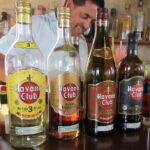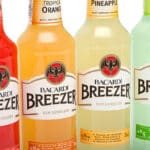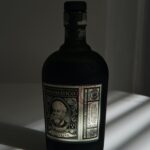The Origin and Evolution of the Term “Cocktail” Throughout History
Long before the term “cocktail” became popular, cultures around the world were already mixing drinks to create elixirs, remedies, and liquid celebrations.These ancient mixtures often had both ceremonial and medicinal purposes.
Wine and Herbs in Ancient Egypt
The ancient Egyptians were known for fermenting grains and fruits, creating the first versions of beer and wine. These drinks were often mixed with local herbs and spices for medicinal or spiritual purposes. The addition of herbs not only improved the taste, but was also believed to bring healing properties.
Posca in Ancient Rome
The Romans drank a liquid called “posca,” a mixture of vinegar, water, and herbs. Although not an alcoholic beverage in itself, this preparation was essential for Roman soldiers and was considered refreshing and nutritious, especially on very hot days.
Medicinal Mixtures in Asia
In China and elsewhere in Asia, alcohol has been used for millennia in traditional medicine. It was mixed with herbs, roots, and other natural ingredients to treat a variety of ailments. Some of these mixtures were also consumed in celebrations and ceremonies.
European Potions of the Middle Ages
During the Middle Ages in Europe, “potions” were common. These were blends of herbs, spices, fruits, and alcohol. They were often prepared by herbalists and were believed to cure diseases and bad moods. In addition, alcohol mixed with herbs and spices was used to preserve and improve the taste of beverages.
Pulque and Chicha in Pre-Columbian America
In the ancient civilizations of America, such as the Aztecs and Incas, corn and agave-based drinks were fermented, giving rise to drinks such as pulque and chicha. These drinks were often consumed in religious ceremonies and mixed with local ingredients to create diverse flavors and effects.
1806: The First Recorded Mention
The term “cocktail,” as we know it today, made its written debut in the 19th century. Curiosity about this term and its definition has been the subject of discussion and debate among historians and cocktail enthusiasts.
“The Balance, and Columbian Repository”
On May 13, 1806, a Hudson, New York newspaper, called “The Balance, and Columbian Repository,” published an answer to a reader’s question, “What is a cocktail?” The answer was: “A cocktail is a stimulating drink composed of liquors of any kind, sugar, water, and bitters.” This definition, while simple, lays the foundation for what we now consider a classic cocktail.
A Term Shrouded in Mystery
Although this is the first known written mention, it is difficult to determine precisely when and where the term “cocktail” originated. What we do know is that, before 1806, the word was already used in certain circles, but it had not been officially documented in the press.
Society and the Cocktail in 1806
In the 1800s, society was undergoing changes. The industrial revolution was underway, and urbanization was beginning to change the social landscape. Bars and lounges were beginning to proliferate in the cities, offering a space for socializing and enjoying mixed drinks. The cocktail, though still in its early stages, was becoming a statement of sophistication and modernity.
Meaning and Evolution
The original 1806 definition highlights the building blocks of a cocktail: alcohol, sugar, water, and bitters. This simple formula has evolved over the years, adapting to trends, tastes and ingredient availability. However, this definition gives us a clear idea of the roots of the cocktail and its initial purpose as a stimulating drink.
Theories on the Origin of the Word “Cocktail”
The origin of the term “cocktail” has been the subject of debate and speculation for years. Although the first recorded written mention is from 1806, the word’s roots are lost in the mists of history, with several theories attempting to explain its provenance. Here we explore some of the most popular and fascinating theories on how this term became synonymous with mixed drinks.
Las Colas de Gallo
One theory suggests that the term comes from the practice of decorating drinks with rooster feathers, specifically the tail or “cock tail.” However, this theory, while picturesque, lacks substantial documented evidence.
The “Coquetel” Glass
Another theory holds that the term is derived from the French word “coquetel,” which was a glass used in the 18th century to serve mixed drinks. As these drinks became popular in America, the word may have been anglicized to “cocktail.”
Horse Remedies
A more peculiar explanation suggests that the term relates to the practice of placing ginger on the back of a horse, specifically on its tail, to make it lift its tail and appear more energetic before a sale. This practice was called “cocking the tail”. The connection here is a little more abstract, suggesting that a cocktail “stimulates” the drinker in the same way that ginger “stimulated” the horse.
A Mixture of Beverages
A more literal theory suggests that “cocktail” comes from the combination of “cock,” which refers to the lid that is lifted from a bottle, and “tail,” which means the end or remnant. Together, the term could refer to the mixing of the remains of different liquors, creating a “cola” of beverages.
Celebrations and Toast
A more romantic theory proposes that the term comes from the Mexican custom of mixing drinks in a jar and adorning them with a rooster feather before toasting, referred to as “cola de gallo.”
The Evolution of the Cocktail Throughout the Nineteenth Century
As the 19th century progressed, the cocktail went from being a novel curiosity to a cultural institution in many parts of the world. Its evolution reflected the cultural, technological and socio-economic trends of the time, making the cocktail not only a drink, but also a symbol of changing times.
The Rise of Bars and Lounges
With the growth of urban areas and the rise of industrialization, establishments dedicated exclusively to socialization and alcohol consumption emerged. These bars and lounges became innovation hubs for mixed drinks, where bartenders experimented with new recipes and techniques.
The Introduction of Exotic Ingredients
The 19th century was an era of colonial exploration and expansion. This led to the introduction of exotic ingredients in the West, such as curaçao, absinthe, and vermouth. These ingredients enriched the cocktail repertoire and gave rise to classics such as Martini and Manhattan.
The Cocktail as a Style Statement
More than just a drink, the cocktail became a statement of style and sophistication. Elaborate cocktail menus and presentation techniques became a way to attract a more select clientele, especially in cosmopolitan cities like New York, London, and Paris.
Technological Innovations and their Influence
The invention and popularization of refrigeration and ice making transformed cocktail culture. The availability of ice made it possible to experiment with mixing and cooling techniques, resulting in more refreshing and varied cocktails.
Challenges and Controversies
Despite its growing popularity, the cocktail was not without controversy. Absinthe, for example, was banned in several countries due to concerns about its health effects and its supposed hallucinogenic potential. Moreover, the temperance movement, which promoted abstinence from alcohol, saw in cocktails a symbol of moral decadence.
The Birth of Cocktail Guides
At the end of the 19th century, the interest in cocktails led to the publication of the first guides and recipe books. These manuals, written by bartenders and hobbyists, became the cornerstones of mixology, establishing standards and techniques that are still respected today.
The Prohibition Era and the Cocktail Renaissance
The Prohibition Era in the United States, which spanned from 1920 to 1933, was a time of legal drought for alcohol. Paradoxically, this period was also a pivotal moment in the history of the cocktail, influencing its evolution and leaving an indelible mark on American culture.
The Beginning: The Volstead Act
In 1920, the 18th Amendment to the United States Constitution and the Volstead Act went into effect, prohibiting the production, sale, and transportation of alcoholic beverages. These measures were taken in response to the growing temperance movement that associated alcohol with many of the social ills of the time.
The Rise of the Speakeasies
Despite the official ban, alcohol consumption did not stop. Instead, clandestine establishments called “speakeasies” emerged, where people could secretly enjoy alcoholic beverages. Not only did these places serve alcohol, but they also became epicenters of the music, dance, and culture of the “crazy years.”
The Need to Disguise Alcohol
Because quality alcohol became scarce and poor-quality or adulterated liquor was often sold, bartenders had to be creative. They invented cocktails that disguise the taste of inferior alcohol, leading to the creation of many iconic blends that still endure.
The Emigration of Talent
With Prohibition in full swing in the United States, many talented bartenders migrated to places like Europe, taking their skill and knowledge with them. Cities like London and Paris saw a renaissance in the art of mixology, enriched by these cocktail masters.
The End of Prohibition and the Cocktail Renaissance
In 1933, the 21st Amendment repealed Prohibition, once again allowing the production and sale of alcohol in the United States. However, the legacy of those dry years endured. Cocktails invented during Prohibition had taken root in popular culture, and the opening of legal bars and lounges saw a revival in the art of mixology, but now with a touch of nostalgia and romanticism.
The “Cocktail” in Popular Culture
The cocktail, beyond being a drink, has taken a prominent place in popular culture, leaving a lasting impression on film, literature, music and other media. This presence has solidified its role not only as a drink, but also as a symbol of sophistication, rebellion, romance and the essence of good living.
At the cinema
From the party rooms of old Hollywood to the elegant James Bond parties, the cocktail has been a constant in the cinema. Films like Breakfast with Diamonds, Casablanca, and The Great Gatsby feature iconic scenes with characters enjoying cocktails, reflecting the glamour and sophistication of the time. In addition, characters such as James Bond have popularized specific drinks, such as “stirred, not stirred” Martini.
In literature…
Authors such as F. Scott Fitzgerald, Ernest Hemingway, and Dorothy Parker often wove cocktails into their narratives, making the drinks a reflection of the zeitgeist of their time. These writers not only described cocktails, but also immersed themselves in the culture around them, from the decadent parties of the Jazz Age to the bars and cafes of Paris.
In music
Music, especially jazz and blues, has had a symbiotic relationship with cocktail culture. Songs often conjure up images of late-night bars and spirits, and many musicians have paid homage to the cocktail in their lyrics. Frank Sinatra, for example, was often associated with whiskey and other cocktails, celebrating the nightlife in his songs.
In fashion
Cocktails have also influenced fashion, with styles reflecting the elegance and lightheartedness associated with cocktail culture. From 1920s-inspired dresses to accessories like cocktail chopsticks and vintage glasses, fashion has constantly embraced and reinterpreted the aesthetics of the cocktail.
In Visual Art
Artists and photographers have used cocktails as motifs in their works, capturing both the aesthetic beauty of the drink and the atmosphere surrounding it. The bright neon lights of the bars, the silhouettes of the glasses and the vivid hues of the mixes have been sources of inspiration for many creators.
Rum and Cocktails: A Distilled Romance
The relationship between rum and cocktails is a dance of flavours, traditions and stories. From Caribbean beaches to chic urban bars, rum has been the beating heart of countless cocktails, bringing warmth, sweetness and a touch of adventure to every blend. Through this subtitle, we explore how this sugarcane distillate has elevated the art of cocktail making to new horizons.
From the Caribbean with Love
The birth of rum in the Caribbean not only provided the world with a distinctive spirit but also laid the foundation for the creation of iconic cocktails. Refreshing blends of rum with local ingredients brought classics like Mojito and Pina Colada to life.
Liquid Versatility
Rum is amazingly versatile. Whether it’s a light, fresh rum ideal for fruity cocktails or a deep, robust aged rum perfect for savoring alone or in sophisticated blends, there’s a rum for every occasion and palate.
The Golden Age of Cocktails:
During the heyday of cocktail making in the 20th century, rum found its place in the repertoire of every good bartender. With its ability to complement and enhance other ingredients, rum became the basis for many innovative creations.
The Revolution of Modern Mixology
With the renaissance of cocktail making in the 21st century, rum has been rediscovered and reimagined. Mixologists from around the world are experimenting with artisanal rums, creating blends that are both traditional and avant-garde.
Celebrating Culture
Rum, with its Caribbean roots and global influence, is more than a drink; it is a reflection of a rich cultural tapasca. Rum-based cocktails not only delight the palate, but also tell stories of places, people, and traditions.
Conclusion
From its mysterious origin to its ubiquity in global culture, the cocktail has come a long way. It’s not just a combination of ingredients, but a mix of history, culture, art and passion. Its evolution over the centuries has witnessed wars, prohibitions, revivals and technological and cultural revolutions. But what makes the cocktail so special and timeless?
1. Adaptability and Reinvention: Throughout its history, the cocktail has demonstrated an amazing ability to adapt and reinvent itself. Whether facing ingredient shortages during Prohibition or incorporating exotic new ingredients from faraway lands, cocktails have constantly evolved, maintaining their relevance and appeal.
2. An Art in Itself: Mixology, the art of making cocktails, is a form of expression. Just as a painter uses colors and brushes, a mixologist uses ingredients and techniques to create a masterpiece in a glass. It is an art that requires knowledge, passion and creativity.
3. A Social Bond: From old bars and lounges to modern lounges and clubs, cocktails have been the center of socializing. They offer a reason to get together, celebrate, relax, or just enjoy the company of others.
4. Reflection of Culture: As we have seen, the cocktail is often a reflection of the society and culture of its time. Whether evoking the glamour of the Jazz Age, the rebelliousness of Prohibition, or modern sophistication, cocktails tell a story of the era in which they were created.
5. Simplicity and complexity: The beauty of the cocktail lies in its duality. It can be as simple as a whisky on the rocks or as complex as an elaborate blend of various ingredients. But in both cases, when done right, it’s an unforgettable experience.
The Future of the Cocktail: If history has taught us anything, it’s that the cocktail is here to stay. With the resurgence of mixology, craft cocktails, and a renewed appreciation for well-made beverages, the future looks bright. New generations of bartenders and enthusiasts will continue to explore, innovate and take the art of the cocktail to new heights.
Ultimately, the cocktail is more than a drink; it’s a celebration of human life, history, and culture. His timeless legacy is testament to his power to enchant, connect and capture the essence of the human experience in a glass.
Sources
2. Liquor.com
4. Rum Journey
Featured image: Cookist
About The Author
Camilo is an audiovisual communicator with over 15 years of experience. He resides in Caracas, Venezuela, and has studied film and television, acquiring skills in writing film scripts. He currently works as a Digital Content Manager at TRL. If you would like to see his portfolio, you can visit his website at http://ccesarino.com.





